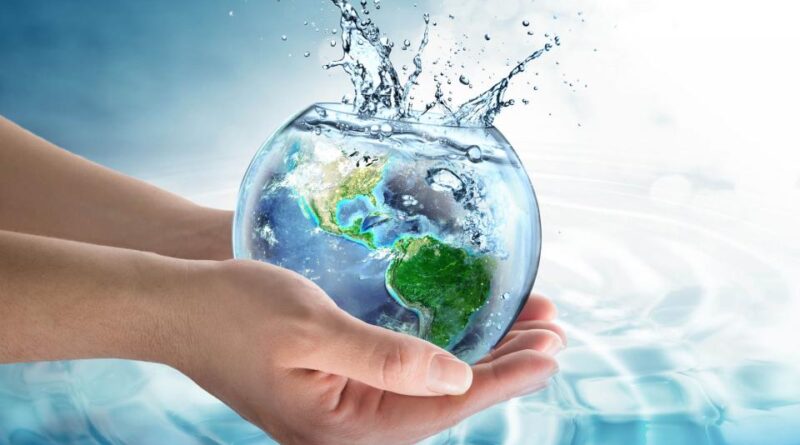How Can Science Help Solve the Global Water Crisis?
Introduction
The global water crisis is one of the most urgent challenges humanity faces today. With billions of people lacking access to clean, safe water and many regions experiencing severe droughts and water scarcity, the need for innovative solutions is more critical than ever. As the global population continues to grow, the demand for fresh water is increasing, while climate change, pollution, and inefficient water management further strain water resources.
However, science holds the key to addressing many of the issues associated with the global water crisis. From advanced technologies to sustainable practices, scientific research and innovation offer numerous solutions that can help mitigate water shortages and improve water quality around the world. In this article, we will explore how science can help solve the global water crisis and provide a sustainable future for all.
1. Advancing Water Purification Technologies
One of the most immediate challenges in addressing the global water crisis is ensuring access to clean and safe drinking water. Contaminated water is a significant health risk, particularly in developing regions, where access to clean water sources is limited.
How Science Can Help:
- Desalination: Scientific advancements in desalination technology, such as reverse osmosis and forward osmosis, are making it possible to turn seawater into fresh water. Although energy-intensive, research into energy-efficient desalination methods is improving the feasibility of this solution in water-scarce coastal areas.
- Water Filtration Systems: Innovations in filtration technologies, including graphene filters, solar-powered purification, and membrane-based filtration, are providing low-cost, effective ways to remove contaminants like bacteria, viruses, and heavy metals from water.
- Portable Water Purifiers: Science has led to the development of portable and affordable water purifiers, which can be used in emergencies or by communities in remote areas. Devices such as LifeStraw and UV sterilizers are improving access to safe drinking water in disaster zones and rural locations.
Tip: Research into sustainable, low-energy desalination methods and affordable filtration technologies is crucial for providing clean water to underserved regions.
2. Improving Water Conservation and Management
Overconsumption and inefficient management of water resources are major contributors to the global water crisis. A significant amount of water is wasted in agriculture, industry, and even in household use. Science is helping to optimize how we use and manage water, ensuring that every drop counts.
How Science Can Help:
- Precision Agriculture: Advances in precision irrigation and smart farming are helping farmers reduce water usage. Technologies such as drip irrigation, soil moisture sensors, and satellite-based weather forecasting help farmers apply water efficiently, targeting specific areas in need.
- Water Recycling and Reuse: Scientific developments in wastewater treatment and water recycling are making it possible to reuse water for industrial, agricultural, and even potable purposes. The process of turning wastewater into reusable water through advanced filtration and treatment technologies is gaining momentum in urban centers and industries.
- Water-Efficient Technologies: Innovations such as low-flow toilets, water-saving appliances, and smart water meters are helping households and businesses reduce their water consumption. In many places, public awareness and incentives for water-efficient technologies are helping drive this shift toward conservation.
Tip: Promoting sustainable water use practices in both urban and rural settings, as well as encouraging investment in water-efficient infrastructure, can significantly reduce global water waste.
3. Climate Change Mitigation and Adaptation
Climate change is having a direct and devastating impact on global water systems, contributing to more frequent and severe droughts, floods, and changes in precipitation patterns. The interdisciplinary field of climate science plays a crucial role in addressing these challenges and helping regions adapt to new water realities.
How Science Can Help:
- Drought-Resistant Crops: Advances in genetic engineering and biotechnology are enabling the development of drought-resistant crop varieties. These crops require less water to grow, reducing the strain on water resources in agriculture-heavy regions.
- Water Storage and Flood Management: Climate science and hydrology are advancing technologies for water storage systems that can capture and store excess water during periods of heavy rainfall, which can then be used during droughts. For example, rainwater harvesting systems are being developed to collect and store rainwater for agricultural and domestic use.
- Flood Control Systems: In flood-prone regions, science-based flood management systems using data from satellite imagery, climate modeling, and early-warning systems can help predict and manage flooding events, reducing their devastating impacts on water supplies and communities.
Tip: Integrating climate science into water management strategies is essential for adapting to the changing climate and ensuring sustainable water resources in the future.
4. Addressing Pollution and Protecting Water Sources
Pollution is another significant threat to global water quality. Agricultural runoff, industrial waste, and plastic pollution are just a few of the many sources of contamination that compromise water sources worldwide.
How Science Can Help:
- Bioremediation: Bioremediation is a scientific process that uses naturally occurring or engineered microorganisms to clean up contaminants in water. For example, certain bacteria can break down oil spills, while others can degrade harmful chemicals in wastewater.
- Pollution Monitoring and Detection: Advances in sensor technology and remote sensing allow for real-time monitoring of water quality. Early detection of pollutants like heavy metals, pesticides, and pharmaceutical residues helps authorities take immediate action to prevent contamination.
- Plastic Waste Solutions: Scientific research into biodegradable materials, microplastic filtration, and plastic-eating enzymes is helping address the growing issue of plastic pollution in oceans and freshwater ecosystems. By developing technologies that break down plastics or capture microplastics in water, scientists are working to reduce the harmful impact of plastic on aquatic life and water quality.
Tip: Implementing stricter regulations on water pollution and investing in innovative waste management technologies are essential for protecting freshwater sources.
5. The Role of Smart Technology and Data Analytics
In the digital age, data-driven solutions are revolutionizing how we manage and monitor water resources. The application of smart technologies and data analytics is transforming water management, from detecting leaks to optimizing water distribution systems.
How Science Can Help:
- Smart Water Networks: The use of IoT sensors and AI-driven analytics in smart water grids allows municipalities to monitor water quality, pressure, and consumption in real-time. This data can be used to detect leaks, optimize distribution, and reduce waste.
- Water Usage Forecasting: Advanced data modeling techniques, such as machine learning, can predict water usage patterns and inform decisions about water allocation. This is particularly useful in regions facing water scarcity, as it helps ensure water is distributed where it is most needed.
- Leak Detection: Advanced sensors and acoustic technologies are now being used to detect leaks in pipelines and water systems. Early detection prevents significant water loss and ensures more efficient water distribution.
Tip: Leveraging smart technologies and data analytics can dramatically improve the efficiency of water management and help prevent waste.
6. International Collaboration and Scientific Research
The global water crisis is a complex, multifaceted issue that requires cooperation among governments, organizations, and the scientific community. Collaborative research, knowledge-sharing, and international partnerships are key to developing sustainable water solutions on a global scale.
How Science Can Help:
- Global Water Research Initiatives: International organizations such as the United Nations and World Bank are investing in water-related research and solutions. Scientific research focused on sustainable water use, climate adaptation, and innovative technologies is being conducted across the globe to share knowledge and create actionable solutions.
- Water Diplomacy: In many regions, countries share water resources, and managing these shared resources requires collaboration and scientific data to resolve conflicts. Water diplomacy, supported by science, helps create fair and sustainable water-sharing agreements.
- Community-Based Water Solutions: Science also plays a role in creating community-driven solutions. In many parts of the world, local innovations in water management, such as water-sharing cooperatives or rainwater harvesting systems, are addressing water scarcity in a sustainable way.
Tip: Promoting international cooperation and investing in cross-border scientific research will help address the global water crisis more effectively.
Conclusion
The global water crisis is a complex issue that requires innovative solutions and global cooperation. Through the application of scientific advancements in areas such as water purification, conservation, pollution control, climate adaptation, and smart technologies, we can create a more sustainable and equitable future for water resources. As the world continues to face the challenges of water scarcity and pollution, science will remain at the forefront of efforts to safeguard this vital resource and ensure its availability for generations to come.

